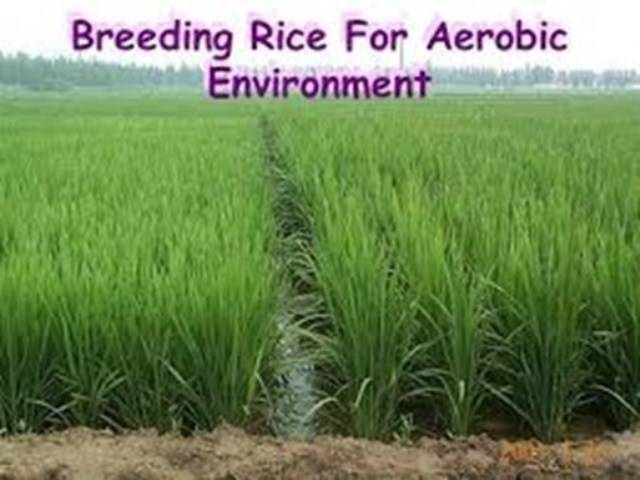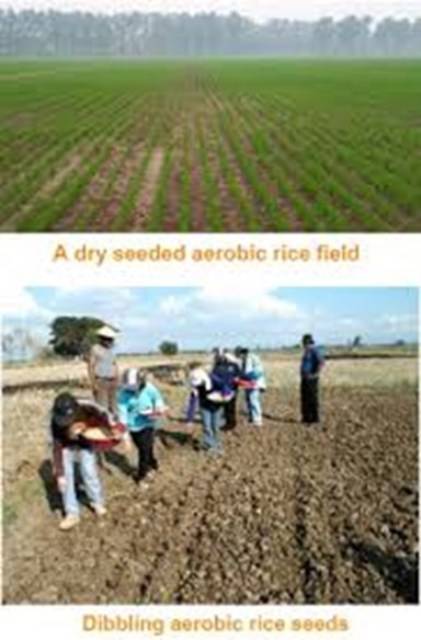
Aerobic rice is direct-seeded into the field, eliminating the cost of raising nursery, transplantation and its related impact on labour health. Direct seeding also reduces ‘seed rate’ dramatically. The Bengaluru-based KisanKraft intends to take the 'aerobic rice' technology to five states during this Kharif season and conduct demonstrations to reach out to more farmers.
Aerobic rice is a production system where rice is grown in well-drained, non-puddled, and non-saturated soils. Water requirements can be lowered by reducing water losses due to seepage, percolation, and evaporation.
Promising technologies include saturated soil culture and intermittent irrigation during the growing period. However, these technologies still use prolonged periods of flooding, so water losses remain high.

A fundamentally different approach is to grow rice like an upland crop, such as wheat, on nonflooded aerobic soils, thereby eliminating continuous seepage and percolation. This also reduces evaporation. Traditional upland rice has been bred for the unfavorable uplands to give a stable, though low, yield with minimal external inputs.
Previous experiments of growing high-yielding lowland rice under aerobic conditions have shown great potential to save water but it has severe yield penalty. A new type of rice is needed to achieve high yields under high-input aerobic conditions.
KisanKraft is a designer, importer and distributor of affordable farming equipment suited to the needs of small and marginal farmers.
According to Ravindra K Agrawal, Promoter and Managing Director, KisanKraft, the aerobic rice technology is an excellent solution for water-stressed paddy farmers. It could prove to be a lifesaver for the country, farmers and help in restoring soil conditions while contributing to national food security, he informed.

There is no puddling and no standing water, hence costs associated with the use of water and pumping cost is also minimized. It also ensures saving of more than 60 percent in water and 55 percent in labour. Use of fertilizer is reduced since it no longer washes off with excess water.
Certain pests and diseases don’t breed in aerobic conditions, therefore, use of chemicals is also reduced. A lot of aerobic rice varieties have been released in India and abroad, Agrawal said.
Paddy fields today are known to be one of the biggest agricultural anthropogenic sources of green house gases (nitrous oxide and methane, in particular).
Agrawal further added "Aerobic rice severely reduces these gases by eliminating standing water, and thus, as a nation, we can reduce our carbon footprint and accrue carbon credits."
All this is possible without any compromise in grain yield. Mixed cropping and crop rotation practices are possible. Soil health improves since continuous mono-culture is curtailed.
Agrawal favouring the technology and added that due to mechanization involved in aerobic rice farming, hence, no labour displacement and associated protest.
"On the contrary, there is an acute shortage of farm labour and that is the reason farm-mechanization among small farmers is growing very fast here."
Except the Himalayas, the coastal areas and the hilly areas (with excess water), the rest of the country can grow aerobic rice. Black cotton soil and lowlands in submerged water conditions are unsuitable.
The primary reason why aerobic rice has not become popular option here is the insufficient extension work by agriculture universities, Agrawal said.
The universities also lack resources and are largely focused on yield rather than water conservation. "Also 85 percent of farmers in the country have small plots with low risk-taking capacity. There is an overwhelming fear that adoption of new technologies is a gamble with their livelihood."










